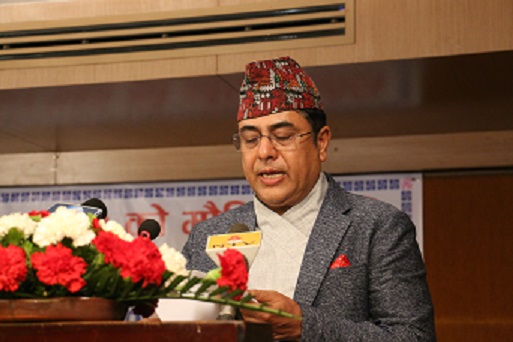Monetary Policy hopes to maintain 7.5 % inflation and 6.5 % economic growth
 Kathmandu / July 14: Nepal Rastra Bank (NRB), the central bank of the country, today released the Monetary Policy for the Fiscal Year 2016/17, focusing on harmonizing with the goals and priorities adopted by the budget as well as the national and international economic outlook.
Kathmandu / July 14: Nepal Rastra Bank (NRB), the central bank of the country, today released the Monetary Policy for the Fiscal Year 2016/17, focusing on harmonizing with the goals and priorities adopted by the budget as well as the national and international economic outlook.
The Monetary Policy focuses on ramping up capital flow towards the productive sectors as agriculture, energy, tourism, small and cottage industries as well as to the poor.
As per the policy, the liquidity would be managed so as to maintain the consumer inflation rate at 7.5 per cent and to support the government’s target of achieving 6.5 per cent economic growth rate as stated in the budget statement.
Likewise, the policy has projected the internal borrowing spread rate target to increase by 25 per cent and the private sector borrowing by 20 per cent.
Launching the Monetary Policy for the Fiscal Year 2016/17, NRB Governor Chiranjivi Nepal said that the duration of achieving mandatory cash reserve has been increased to two weeks from one week and the project loan up to one million rupees to be issued by the banks and financial institutions on the deposit of the Commercial Agriculture Project would be counted as ‘Loan for the Impoverished Classes’.
Stating that while the provision requiring the commercial banks to issue 20 per cent of their total loans in the designated productive sectors has been retained, Governor Nepal said the minimum limit of the loans to be issued to the agriculture and energy sectors has been increased to 15 per cent from 12 per cent. This provision should be put in place by the end of the Nepali month Asar next year.
Likewise, the policy has the provision which states that the commercial banks which have to maintain four per cent ‘leaverage’ ratio on a quarterly basis from the next fiscal year need to reduce the proportion of the institutional deposit in the total deposits from 60 per cent and keep it within the 50 per cent limit.
Likewise, the policy has increased the limit, for converting the loan into co-financing loan of the loan of borrower using multi-banking loan of Rs 500 million or above, to one billion rupees.
The policy has also set the goal of establishing a Infrastructure Development Bank with the participation of the private sector for investing in the infrastructure development sector. It has also incorporated the provision which requires the banks and financial institutions to set aside at least one per cent of their profits for works related to corporate responsibility and spend at least three per cent of the total expenditure on employees on training and career development.
The limit of convertible foreign currency for purchasing software which would be payable through India has been increased from the present maximum 10 thousand US Dollars to 15 thousand US Dollars for one time.
Likewise, the paid-up capital that the institutions involved in the remittance and money exchange business have to maintain has also been increased.
On the occasion, Governor Nepal expressed the belief that the new monetary policy would be of help in maintaining fiscal stability and achieving the targeted economic growth. RSS
